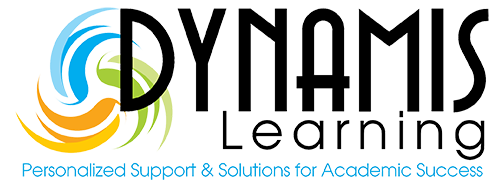An Important Path to a Child’s Future Success in Public Schools
 Start Early: Pre-Teen Planning for Post-Secondary Success
Start Early: Pre-Teen Planning for Post-Secondary Success
I recently recorded a podcast with one of my tutors, Erica, who is a veteran educator and has tutored for the last 10 years. She currently teaches in a public high school in Georgia. Erica specializes in chemistry and has taught many of the science courses offered by most districts in the state. She is receiving her Ph.D. in education with an emphasis on curriculum and instruction at Mercer University.
The topic of this podcast was the best way to prepare children for their future careers by getting them on the right track early in their education. As early as third grade, kids should be starting on a path that will help them figure out what their interests are, then take the right classes that will help them develop those interests into marketable skills. Click here to listen to the podcast.
 At What Age Should Kids Begin to Plan for Post-Secondary Success?
At What Age Should Kids Begin to Plan for Post-Secondary Success?
The earlier you have the academic course planning discussion with your child, the better. Middle school is a good time to start that discussion, especially when they’re starting to get exposed to things that aren’t just P.E., STEM, art, library and music as their Specials/Connections. This is where they can begin to see careers in healthcare, broadcasting, etc. Middle school is a great time to have your child take some of these different courses to see if they like any of them. And if they don’t like them, they will know quickly. At a minimum, they would have been exposed to various industries which is important because it will allow them to start thinking about other options.
The Types of Career Interest Diagnostic Tools Available to Students
Some of the bigger districts like Fulton and Cobb Counties in Atlanta, Georgia typically offer a diagnostic program in middle school called ‘You Science’. This career interest inventory diagnostic assesses students’ answers to questions and helps guide them toward career pathways. It will also identify electives students may want to consider. When combined with AP Potential, a metric released by the College Board after students take the PSAT, this program will further identify advanced pathways where students can potentially earn college credit through taking specific AP (Advanced Placement) courses. These courses, along with the career interest inventory, should help students make academic planning decisions for high school and their post-secondary education.
The Benefits of Taking Electives in Middle School
The state of Georgia also has a program called CTAE (Career Tech Agricultural Education) pathways. A student can take 3 courses in a pathway, then take an “end of pathway” test and get a certification in that topic – some examples are Adobe, basic healthcare, and computer science – which will help them get a job. This allows them to start working while gaining their post-secondary education. Also, being able to explore those electives in middle and high school gives them an opportunity to see what they enjoy, and they get to learn some skills too.
 Tips for Tweaking a Child’s Class Schedule to Create the Best Outcome
Tips for Tweaking a Child’s Class Schedule to Create the Best Outcome
Something to consider… For a subject your child is not truly interested in, they would be better off in an on-level or honors class instead of being pushed into honors or AP, respectively. Our professional opinion on this is that it’s best to let your child have some say and be okay with it – think twice if they are being pushed into upper-level classes in a subject that’s not their passion. A student who is good at math but whose real interest is in the humanities should be encouraged to take higher level classes in language and literature as opposed to calculus, for example.
Ways Parents Can Help Their Children Advocate for Themselves Without Helicoptering
Helicoptering is a term that describes parents who are constantly hovering over grades and handling their teen’s education for them. It’s best if the parent takes a step back, allowing their child to be independent. This is the best time for the teen to reach out to his/her teacher, ask for extra credit or remediation, as this piece is important to the student in terms of growth and maturity. The parent’s role in all this is to teach their teen how to ask, how to write a proper email, how to be polite and how to accept the answer if the answer is ‘no’. These are also good life skills to have as a person. Let your child start learning how to do these things for himself/herself in 6th, 7th or 8th grade while you continue monitoring their grades and attendance, making sure they’re doing what they need to do.
 How to Successfully Incorporate Rigor into a Child’s Schedule
How to Successfully Incorporate Rigor into a Child’s Schedule
There are classes you can get rigor points for when it comes to the Hope Scholarship here in Georgia, which is how some students get most if not all of their schooling paid for if they score at a certain level. Some courses, by the nature of what they are, count toward rigor – in science, chemistry and physics are both examples – so the student can take on-level courses and get rigor points without having to go the AP route if it’s not a subject they’re interested in.
How Can Dynamis Learning Help?
 Academic course planning allows students to build a working document that takes their interests and career goals into account. A team member from Dynamis Learning will sit down and look at what a potential schedule for high school might look like (depending on your child’s grade level). We can even build the plan in such a forward-thinking way that choosing even middle school electives or taking the opportunity to take high school classes in middle school can be strategically done so that those goals can be met. Schools often start scheduling students for the next school year as early as the end of January the prior year for high school or a bit later in the spring for middle school. The initial planning meeting takes about an hour on a virtual platform. This plan can be revisited each year as part of a 30-minute “tune-up.” We recommend doing these in the Fall or early in the second semester (January), but they can be done at any time.
Academic course planning allows students to build a working document that takes their interests and career goals into account. A team member from Dynamis Learning will sit down and look at what a potential schedule for high school might look like (depending on your child’s grade level). We can even build the plan in such a forward-thinking way that choosing even middle school electives or taking the opportunity to take high school classes in middle school can be strategically done so that those goals can be met. Schools often start scheduling students for the next school year as early as the end of January the prior year for high school or a bit later in the spring for middle school. The initial planning meeting takes about an hour on a virtual platform. This plan can be revisited each year as part of a 30-minute “tune-up.” We recommend doing these in the Fall or early in the second semester (January), but they can be done at any time.
To set up a complimentary consultation about your child’s future academic needs which may include an academic plan, contact Helen at 770-282-9931 or email her at info@dynamislearningacademy.com.
An Important Path to a Child’s Future Success in Public Schools

Start Early: Pre-Teen Planning for Post-Secondary Success
I recently recorded a podcast with one of my tutors, Erica, who is a veteran educator and has tutored for the last 10 years. She currently teaches in a public high school in Georgia. Erica specializes in chemistry and has taught many of the science courses offered by most districts in the state. She is receiving her Ph.D. in education with an emphasis on curriculum and instruction at Mercer University.
The topic of this podcast was the best way to prepare children for their future careers by getting them on the right track early in their education. As early as third grade, kids should be starting on a path that will help them figure out what their interests are, then take the right classes that will help them develop those interests into marketable skills. Click here to listen to the podcast.

At What Age Should Kids Begin to Plan for Post-Secondary Success?
The earlier you have the academic course planning discussion with your child, the better. Middle school is a good time to start that discussion, especially when they’re starting to get exposed to things that aren’t just P.E., STEM, art, library and music as their Specials/Connections. This is where they can begin to see careers in healthcare, broadcasting, etc. Middle school is a great time to have your child take some of these different courses to see if they like any of them. And if they don’t like them, they will know quickly. At a minimum, they would have been exposed to various industries which is important because it will allow them to start thinking about other options.
The Types of Career Interest Diagnostic Tools Available to Students
Some of the bigger districts like Fulton and Cobb Counties in Atlanta, Georgia typically offer a diagnostic program in middle school called ‘You Science’. This career interest inventory diagnostic assesses students’ answers to questions and helps guide them toward career pathways. It will also identify electives students may want to consider. When combined with AP Potential, a metric released by the College Board after students take the PSAT, this program will further identify advanced pathways where students can potentially earn college credit through taking specific AP (Advanced Placement) courses. These courses, along with the career interest inventory, should help students make academic planning decisions for high school and their post-secondary education.
The Benefits of Taking Electives in Middle School
The state of Georgia also has a program called CTAE (Career Tech Agricultural Education) pathways. A student can take 3 courses in a pathway, then take an “end of pathway” test and get a certification in that topic – some examples are Adobe, basic healthcare, and computer science – which will help them get a job. This allows them to start working while gaining their post-secondary education. Also, being able to explore those electives in middle and high school gives them an opportunity to see what they enjoy, and they get to learn some skills too.

Tips for Tweaking a Child’s Class Schedule to Create the Best Outcome
Something to consider… For a subject your child is not truly interested in, they would be better off in an on-level or honors class instead of being pushed into honors or AP, respectively. Our professional opinion on this is that it’s best to let your child have some say and be okay with it – think twice if they are being pushed into upper-level classes in a subject that’s not their passion. A student who is good at math but whose real interest is in the humanities should be encouraged to take higher level classes in language and literature as opposed to calculus, for example.
Ways Parents Can Help Their Children Advocate for Themselves Without Helicoptering
Helicoptering is a term that describes parents who are constantly hovering over grades and handling their teen’s education for them. It’s best if the parent takes a step back, allowing their child to be independent. This is the best time for the teen to reach out to his/her teacher, ask for extra credit or remediation, as this piece is important to the student in terms of growth and maturity. The parent’s role in all this is to teach their teen how to ask, how to write a proper email, how to be polite and how to accept the answer if the answer is ‘no’. These are also good life skills to have as a person. Let your child start learning how to do these things for himself/herself in 6th, 7th or 8th grade while you continue monitoring their grades and attendance, making sure they’re doing what they need to do.

How to Successfully Incorporate Rigor into a Child’s Schedule
There are classes you can get rigor points for when it comes to the Hope Scholarship here in Georgia, which is how some students get most if not all of their schooling paid for if they score at a certain level. Some courses, by the nature of what they are, count toward rigor – in science, chemistry and physics are both examples – so the student can take on-level courses and get rigor points without having to go the AP route if it’s not a subject they’re interested in.

How Can Dynamis Learning Help?
Academic course planning allows students to build a working document that takes their interests and career goals into account. A team member from Dynamis Learning will sit down and look at what a potential schedule for high school might look like (depending on your child’s grade level). We can even build the plan in such a forward-thinking way that choosing even middle school electives or taking the opportunity to take high school classes in middle school can be strategically done so that those goals can be met. Schools often start scheduling students for the next school year as early as the end of January the prior year for high school or a bit later in the spring for middle school. The initial planning meeting takes about an hour on a virtual platform. This plan can be revisited each year as part of a 30-minute “tune-up.” We recommend doing these in the Fall or early in the second semester (January), but they can be done at any time.
To set up a complimentary consultation about your child’s future academic needs which may include an academic plan, contact Helen at 770-282-9931 or email her at info@dynamislearningacademy.com.
